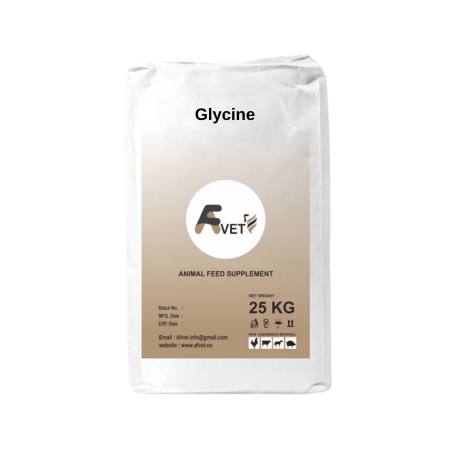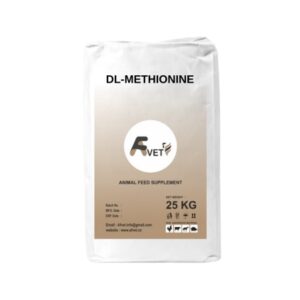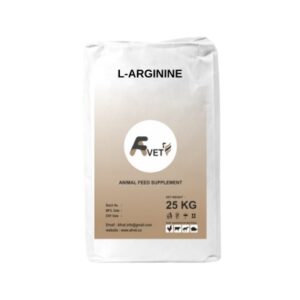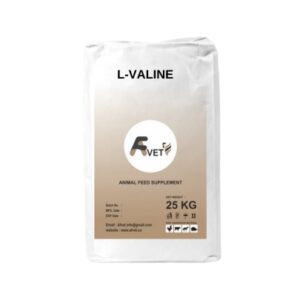Description
Glycine is an essential amino acid for chickens, because although chickens can synthesize glycine, its synthesis rate cannot meet the growth needs of chickens.Glycine is mainly used as an additive and attractant to increase amino acids in feeds eaten by poultry, livestock and poultry, especially pets. Used as a hydrolyzed protein additive, as a synergist for hydrolyzed protein. Therefore, when the glycine content of the protein in the chicken diet is low, additional glycine has the effect of promoting the growth of the chicken. When used in feed additives, glycine is not only the main nutrient component of livestock and poultry feed, but also can prevent the oxidative deterioration of the feed and prolong the fresh-keeping period of the feed.
Glycine’s properties
- Glycine is mild and sweet tasting and counteracts the saccharine aftertaste. The shelf life of Glycine is 24 months if stored under suitable conditions. Optimal storage conditions for this substance mean that it is kept in a closed container at a temperature below 37°C.
- Glycine occurs naturally in many foods. It is found in wheat germ, sesame seeds, pumpkin seeds, sunflower seeds, peanuts, red lentils, flaxseeds, fresh fish, chicken breast, pork loin, beef, wheat bran, white rice, cauliflower, raspberries, walnuts, jelly beans, buckwheat groats, oatmeal, seafood, cream cheese, cottage cheese, and broth, among others.
Glycine applications
- Among the amino acids considered particularly important in animal nutrition, including poultry, glycine plays an important role. It is involved in hematopoietic processes, the formation of bile salts, and uric acid – the primary form of nitrogen excretion in birds. In very young birds, the synthesis of glycine is low, which is why it is often considered a semi-essential amino acid in them.
- Amino acids, a group of substances that includes Glycine, are also valued by pig farmers, mainly because the use of pure amino acids in pig feed reduces the use of post-extraction soybean meal by up to 50%. The use of using pure amino acids in animal feed can also reduce the production of greenhouse gasses by pigs by about 54-56%.
- Glycine for animal nutrition is mainly used as an additive and attractant to increase amino acids in feed for poultry, livestock, especially pets. It can also be used as an additive for hydrolyzed protein and as a synergist for hydrolyzed protein.







Reviews
There are no reviews yet.